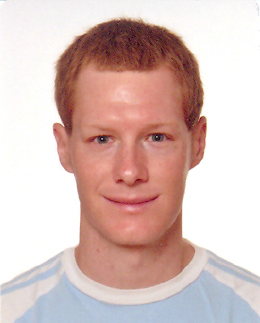Andrej Kosmrlj
Department of Physics

Andrej Kosmrlj is a postdoc in the Physics department at Harvard University. After representing Slovenia in high school at the International Science Olympiads in Physics (silver medal), Mathematics and Informatics, he enrolled in the Physics department at the University of Ljubljana for undergraduate studies. There he was first exposed to the scientific research world, where he studied selfassembly of colloidal particles with purely repulsive interactions. He showed that a simple mean-field calculation qualitatively reproduces a phase diagram (fluid and crystalline phases with lamellar, micellar, and inverted micellar morphologies) obtained with computer simulations. Andrej completed his B.Sc. with high honors at the University of Ljubljana in 2006. Afterwards he enrolled in the physics graduate school at MIT, where he was coadvised by Prof. Arup Chakraborty and Prof. Mehran Kardar. During his PhD Andrej entered the biophysics world and used statistical physics methods to study how T cells, an important component of the adaptive immune system, distinguish between healthy and infected cells. He showed how T cells are developed, such that an individual T cell can recognize diverse foreign objects, while at the same time the recognition is quite specific — in many cases a single amino acid mutation of the foreign object abrogates T cell recognition. As a consequence of this study Andrej was able to explain why people with certain genes are more likely to control the HIV infection. He showed how these genes affect the T cell development, such that the mature T cell repertoire is better at recognizing the highly mutating HIV virus. Andrej finished his PhD at MIT in 2011. Currently he is a postdoc with Prof. David Nelson in the Physics Department at Harvard University. Here Andrej returned to the soft condensed matter area and studies elastic properties of warped membranes. He showed that effective elastic constants depend on the length scale at which they are measured. Depending on the membrane roughness there could be a crossover between two regimes, where effective elastic constants are roughly constant at short length scales and have a strong length scale dependence at large length scales. These theoretical concepts are being explored experimentally by the Weitz group through a MRSEC collaboration in the Droplet Templated Materials group.
